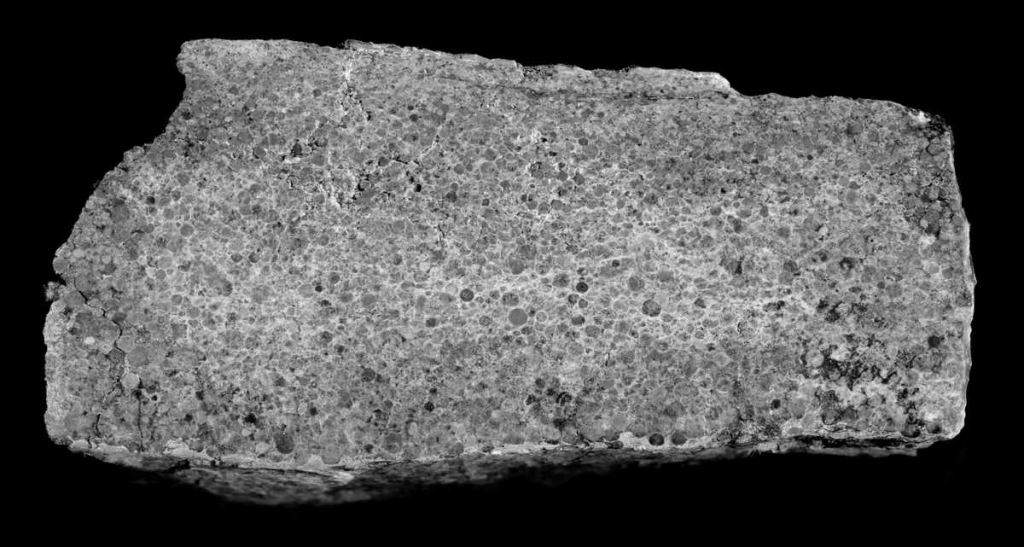It’s no secret that Earth was bombarded with plenty of meteors for billions of years during the solar system’s early formation. Estimates vary on how much material impacted the planet, but it had a considerable effect on the planet’s atmosphere and the evolution of life. Now, a new study from a team led by researchers at the Southwest Research Institute puts the number at almost ten times the number of previously estimated impacts. That much of a difference could dramatically change how geologists and planetary scientists view the early Earth.
Early on, the solar system was much more populated with space rocks. Those space rocks were known to hit Earth, and speculation abounds about what happened when they did so. Earth eventually partially cleaned out its orbital path, culminating in the period called the Late Heavy Bombardment.
While the destructive power of that time period has been well documented, large asteroids continued to impact the Earth consistently for billions of years. When they did so, they formed “impact spherules” of molten rock that were thrown into the air, solidified, and then landed back on the Earth’s surface. They became distinct sand-grain-sized spherical components of the geological layers laid down when their impact happened.
There are multiple spherule layers in the geologic record, showing that impacts large enough to create sky-bound ejecta were common. More have been found recently, leading researchers to examine whether the newfound abundance of these spherule layers was accounted for in simulations of early asteroid bombardment.
Credit – History of the Earth YouTube Channel
It turns out they weren’t – current bombardment models resulted in about ten times fewer spherule layers that have been found in the geological record. Consequently, that implies up to ten times more major asteroid impacts in that time period than models had predicted.
That many more impacts could have had a significant effect on one of the most important environmental factors of the early Earth – its oxygen level. After discovering the discrepancy between the model predictions and the geological data, researchers moved on to modeling what influence these impacts would have on the planet’s environmental chemistry.

Credit – SwRI
Unsurprisingly, it had a pretty major impact. Large impacts, such as those creating spherule layers, can create reactive gases that react with oxygen to pull it out of the atmosphere. According to the geological record, for much of Earth’s early history, it had extraordinarily low oxygen levels. It turns out that multiple large impactors might have maintained low levels for billions of years.
Those billions of years eventually ended with what is now known as the Great Oxidation Event, where atmospheric oxygen levels spiked dramatically. At that point, Earth had cleared out most of the larger asteroids in its vicinity, so the additional oxygen released into the atmosphere by its burgeoning biosphere wasn’t wiped out by the reactive gases from asteroid impacts.
That event was one of the significant dramatic shifts in the history of life on Earth. Understanding it now, from so far in the future, is difficult. But it is helpful to know that it was partially enabled by Earth clearing out its orbital path and subjecting itself to significant punishment for billions of years. Just another example of how so many things had to go right for intelligent life to evolve.
Learn More:
SwRI – SwRI-LED TEAM PRODUCES A NEW EARTH BOMBARDMENT MODEL
JPost – Ancient asteroids struck Earth frequently, delayed rise of life – study
UT – Leftover Material Caused the Late Heavy Bombardment
UT – Evidence of a Late Heavy Bombardment Occuring in Another Solar System
Lead Image:
Artist’s depiction of asteroids impacting the early Earth.
Credit – SwRI


The “Late Heavy Bombardment” of the article has become problematic, and I think it is telling of that this problem isn’t clearly considered even when it should be – the discussed paper explicitly use the latest bombardment models.
To wit: “To address these issues, we first derive an Archaean impact flux model. A previous model, dubbed E-Belt6, found that an uptick in the impact flux triggered by a dynamical instability of the giant planets at ~4.1?Ga best explained Archaean and Proterozoic impact spherule layers—deposits containing glassy droplets generated by impacts—as well as 3.9–3.7?Ga lunar basins. A recent dynamical model7 favoured an early instability (?4.5?Ga) and used improved giant planet migration histories to conclude that the Archaean impact rate from main belt asteroids (MBAs) was smaller by a factor of ~20 at 3.5?Ga with respect to the E-Belt model. Another model8 adopted this early instability and added leftover planetesimals to supply a long-lived source of impactors that could compensate the reduced asteroid flux and explain the surface density of 1?km lunar craters (N1; Fig. 1a). The resulting impact flux explains the number of N1 lunar craters recorded on 3.9–3.5?Ga terrains but falls short for ages 3.5–3.2?Ga. This discrepancy is because the dynamical models neglected non-gravitational forces, such as the Yarkovsky effect (for example, ref. 9), which produce a steady-state population of small asteroids that slowly leave the main belt. To take into account these effects, the lunar impact flux was increased …”.
The reference model is their reference 8 – “model8 adopted this early instability”.
Further nitpicking, there are many reasons – including the latest BICEP3/Keck observations of a calm slow roll inflation signature of putative hilltop scalar field nature – that we live in an apparent finetuned anthropic universe. But this may not be one of them since the bombardment would had to continue for another 2 billion years to start to push an oxygenated Earth too late in our Sun main sequence lifetime.
*Reasons to consider that we may live.